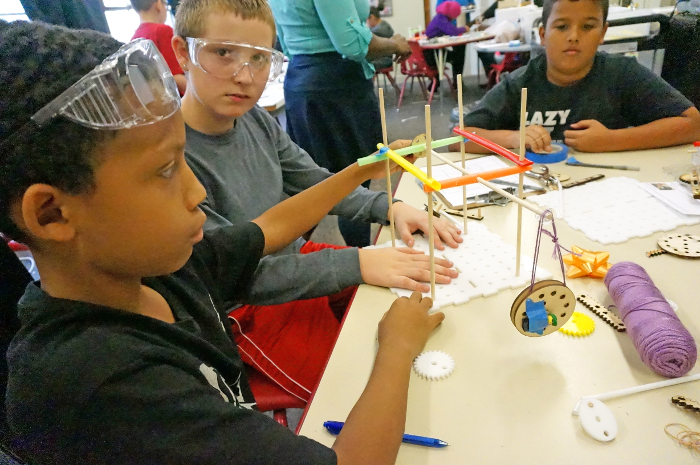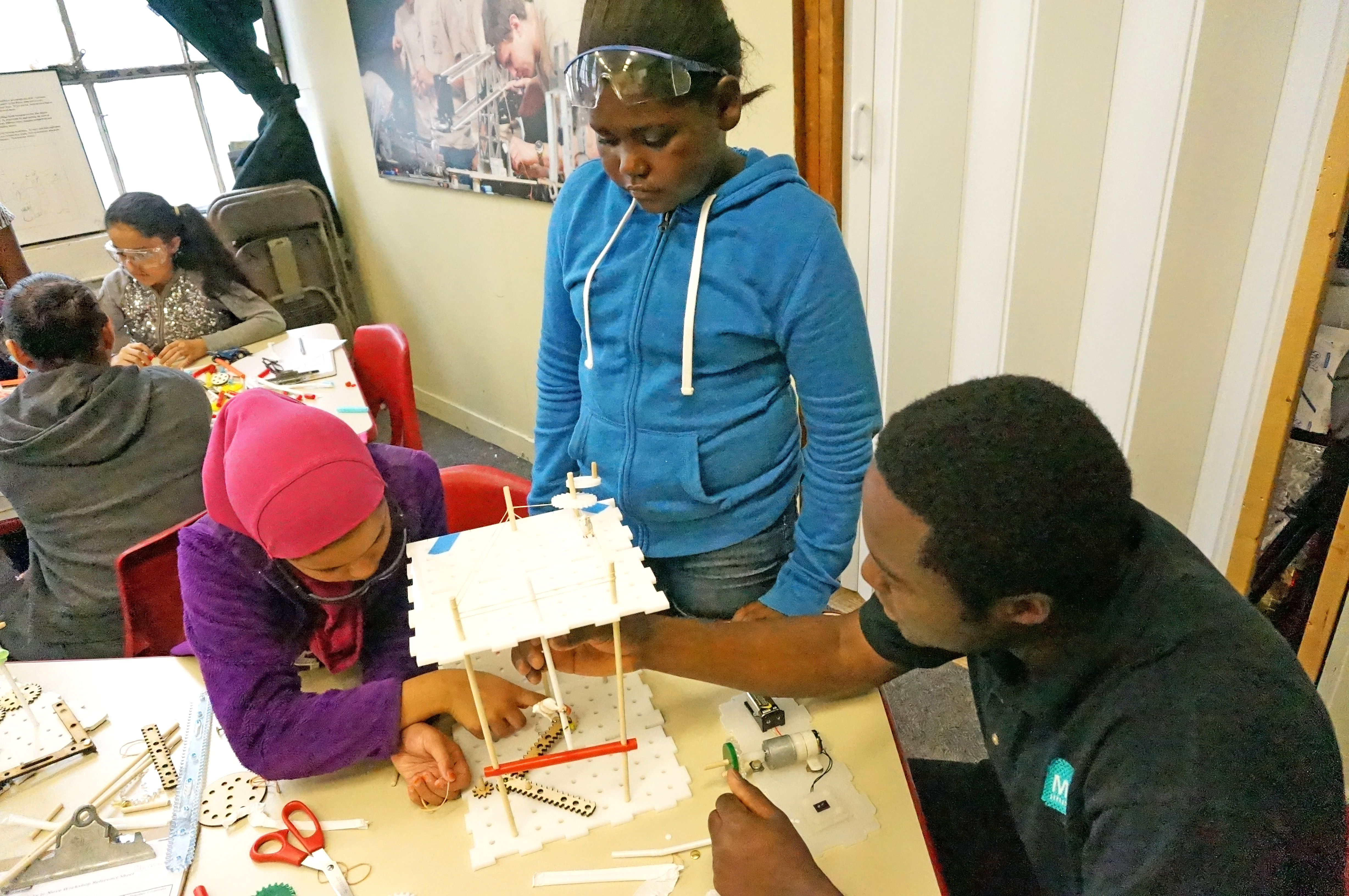The Kinetic Sculpture/Simple Machines has been a project-based collaboration between the 5th grade classroom teachers, the art teacher, the Library/Media Specialist and the technology teacher. The project began by the classroom teacher introducing the concept of simple machines during homeroom science blocks. Students documented and explained every day simple machines found in the kitchen: a can opener, knife, pizza cutter, etc. Teachers also set up an engineer “gallery walk” where students walked around the school makerspace and read about over 20 types of engineers. They were then tasked with finding two types of engineering they were interested in and explaining their interest.

The project officially kicked off with a field trip to the MIT Museum to explore a kinetic sculpture exhibit called “5,000 Moving Parts.” After the gallery tour, students engaged in a hands-on workshop where they built their own kinetic sculptures led by museum staff and two local kinetic artists.

Back at the school, teachers shared the eBook template with each student, and they began by taking a pre-assessment and brainstorming solutions to problems based on “storage, shelter, or convenience” (based on the Massachusetts State Engineering and Design Standards). In the art room, students progressed through developing prototypes and testing their kinetic sculptures/simple machines, documenting their outcomes in their eBooks through writing prompts, images and video.

Midway through the process, we invited local kinetic artist, Wrenford Thaffe, to come share his work and provide feedback on the student designs. Once the simple machine/kinetic sculptures were finished, the final step of the project was student developed public service announcements (PSAs), facilitated by the Library Media Specialist. Student teams worked collaboratively to write storyboards and film their videos in front of the green screen, editing their videos on iMovie, and presenting their work to their peers and teachers.

This project was an example of true interdisciplinary collaboration between a variety of teachers and specialists. It has become an annual “Capstone Project” with the 5th graders sharing their work with students from several other Cambridge Public Schools at the year end science fair.
